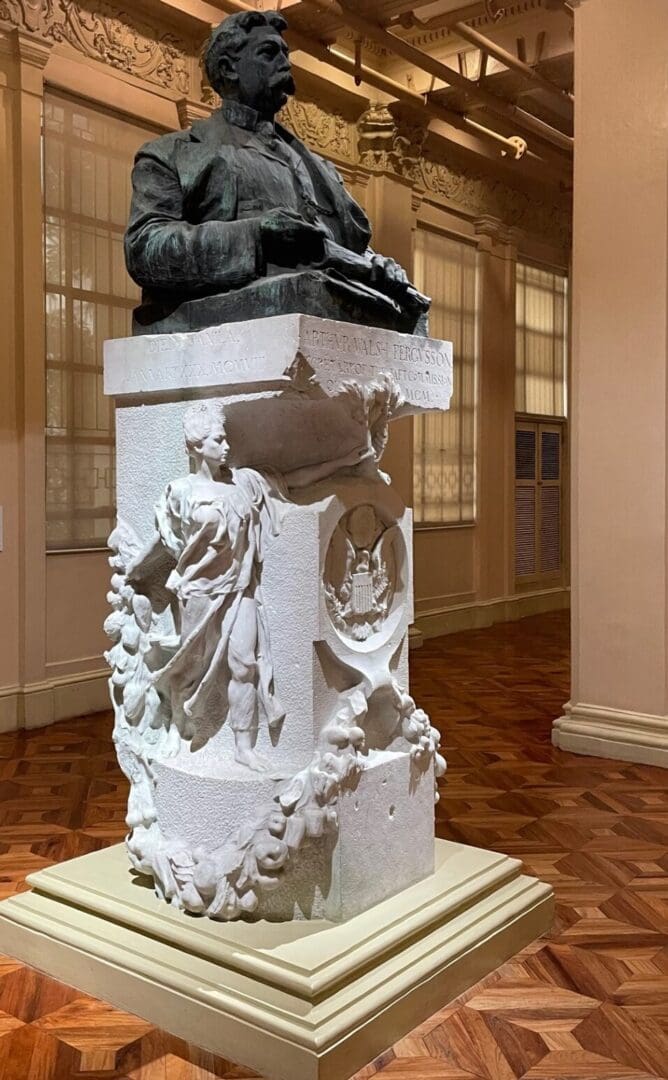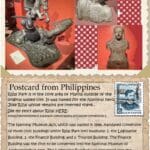How USA Exploited Philippines’ Wish for Independence

[1]A History of the Philippines.
The first Republican Constitution in Asia–called the Malolos Constitution–was drafted and adopted by the first Philippine Republic and lasted from 1899 to 1901 under a revolutionary government. This constitution acknowledged that sovereignty resided solely in the Filipino people. Other notable provisions included: A call for a system of free and compulsory education, a new fiscal and tax system, the foundation of a navy and reorganized army and establishment of a diplomatic corps. Malolos delegates were eager to show that they were capable of running the country without outside help–just as Alaska delegates to a constitutional convention in 1955 would likewise aspire to convince the US Congress and president Dwight Eisenhower–that Alaskans were capable of being a state.
The content below was originally paywalled.
Why Alaskans Wanted Statehood Part 2
https://donnliston.co/2018/12/why-alaskans-wanted-statehood-part-1/
During American Occupation of Philippines, the country was governed by the laws of the United States of America in a manner similar to other territories prior to statehood. And, Organic Acts passed by the US Congress included the first pledge of independence for Philippines while serving as the law of the land from 1902-1935.
[2]Evolution of the Philippine Constitution

The first president of the Philippine Republic was a general who had fought the Spanish for Independence beginning in August 1896. Emilio Aguinaldo Y Famy was on the front lines, preparing for an enemy assault at Pasong Tirona, when he was elected President by secret ballot. He turned 27 years old on the day he took office. After fighting a conventional war against the USA and suffering tremendous losses against much superior forces, Aquinaldo changed to guerrilla tactics. This phase lasted from November of 1899 until Aquinaldo was captured in 1901, and into 1902, by which time most organize Filppino resistance had dissipated. US President Theodore Roosevelt proclaimed a general amnesty and declared the conflict over July 4, 1902 to save face.
Alaska had a different relationship with Philippines. In 1903, about 80 Filipinos formed a cableship crew that laid underwater communication cables connecting Southeastern Alaska with Seattle, thereby playing a vital role in the development of Alaska’s modern communications system. Filipino cableship crews possessed unique technical expertise from their experience laying cables in the Philippines, which was being developed under the management of the U.S. Army.
[3]Buchholdt, Thelma (1996).Filipinos in Alaska: 1788-1958.
______________________________________________________________________________________


______________________________________________________________________________________
Gold had been discovered in the Canadian Klondike. Beginning July 17, 1897 The Great Gold Rush attracted worldwide attention, causing the first true exploration of Alaska and the Yukon by outsiders since its acquisition from Russia in 1867. From the early 1880s to the eve of World War I gold discoveries stretched from the Bering Sea to the Canadian Interior and from the Gulf of Alaska to the Brooks Range. While a few individuals “struck it rich,” most of the gold strikes did not meet the miners’ dreams of riches.

[4]The Stampede North: The Alaska Gold Rushes, 1897-1904
From Wikipedia:
People of Filipino descent represent the largest Asian American subgroup in the State of Alaska. Filipino seamen are recorded as having contact with Alaska Nativesas early as 1788, and Filipino immigrants continued to arrive as workers in Alaska’s developing natural resource industries: as sailors on American whaling ships; as ore sorters for gold mines in Juneau and Douglas Island; and as salmon cannery workers (called Alaskeros). Alaska’s Filipino community has a long history of interaction and intermarriage with Alaska Native communities, and many Filipinos in Alaska also claim Alaska Native heritage.
In 2014, Filipinos made up 52% of Alaska’s Asian and Pacific Islander population. In 2010, they represented 2.7% of Alaska’s total population. Filipino Americans are the largest racial minority in the city of Anchorage, and also have large numbers in the Aleutians and Kodiak Island.
[5]Filipinos in Alaska, retrieved 05/31/23
https://en.wikipedia.org/wiki/Filipinos_in_Alaska

In April, 1900 the second Philippine Commission arrived to formally set up colonial rule, headed by future US President, William Howard Taft. It launched a pacification campaign that became known as the Policy of Attraction, to win over key elites and other Filipinos who did not embrace Aguinaldo’s plans for Philippines Independence. This policy of appeasement through limited self-government, social reforms and plans for economic development weakened arguments for independence.
USA Had the Big Stick
In 1907, the Philippines convened its first elected assembly, and in 1916, the Jones Act promised the nation eventual independence.
[6]US Occupation of Philippines was controversial

https://encyclopedia.1914-1918-online.net/article/philippines
While the Philippine National Guard did not see action in World War I, scores of Filipinos did enlist in the US armed forces. Many saw action on thefront linesin France as members of the US Army; thousands served on ships, or manned operated by the US Navy and the British merchant marine.
[7]Philippines participation in WWI

Walter T. Phillips Photograph Collection, 1911-1918. ASL-PCA-242-53.
In Alaska more than 10,000 men enlisted to serve between 1917 and 1918, though only 2,200 of these enlistees were eventually inducted into service. Most of these 2,200 soldiers were sent to military bases in Alaska for training, while some were transported to bases in the Lower-48. Few of the 2,200 inductees traveled to Europe and participated in battle due to the War’s end in November 1918. Though Alaska Natives and other ethnic minorities pursued enlistment, most were rejected for induction.
Philippine Commonwealth Established
The archipelago became an autonomous commonwealth in 1935, and the U.S. granted independence on its terms in 1946 after shared struggle and sacrifice during World War II. As much as we jacked the good people of Philippines around, they have remained true and reliable allies in a part of the world most Americans do not understand.

[8]Independence on US Terms
References:
[1]A History of the Philippines, Luis H. Francia, Ahrams Press, New York, NY, 2019 P146
[2]Evolution of the Philippine Constitution
The 1934 Constitution
In 1934, the United States Congress passed the Philippine Independence Act, which set the parameters for the creation of a constitution for the Philippines. The Act mandated the Philippine Legislature to call for an election of delegates to a Constitutional Convention to draft a Constitution for the Philippines. The 1934 Constitutional Convention finished its work on February 8, 1935. The Constitution was submitted to the President of the United States for certification on March 25, 1935. It was in accordance with the Philippine Independence Act of 1934. The 1935 Constitution was ratified by the Filipino people through a national plebiscite, on May 14, 1935 and came into full force and effect on November 15, 1935 with the inauguration of the Commonwealth of the Philippines. Among its provisions was that it would remain the constitution of the Republic of the Philippines once independence was granted on July 4, 1946.
[3]Buchholdt, Thelma (1996).Filipinos in Alaska: 1788-1958. Aboriginal Press.ISBN0965541509.
[4]The Stampede North: The Alaska Gold Rushes, 1897-1904
https://www.nps.gov/articles/alaska-goldrush-national-historic-landmarks.htm
[5]Filipinos in Alaska, retrieved 05/31/23
https://en.wikipedia.org/wiki/Filipinos_in_Alaska
[6]US Occupation of Philippines was controversial in US
After theSpanish-American War, while the American public and politicians debated the annexation question, Filipino revolutionaries under Aguinaldo seized control of most of the Philippines’ main island of Luzon and proclaimed the establishment of the independent Philippine Republic. When it became clear that U.S. forces were intent on imposing American colonial control over the islands, the early clashes between the two sides in 1899 swelled into an all-out war. Americans tended to refer to the ensuing conflict as an “insurrection” rather than acknowledge the Filipinos’ contention that they were fighting to ward off a foreign invader.
[7]Philippines participation in WWI
[8]Independence on US Terms




